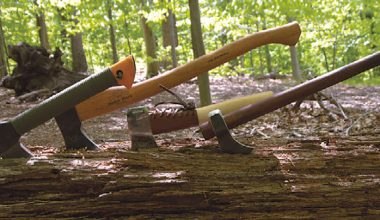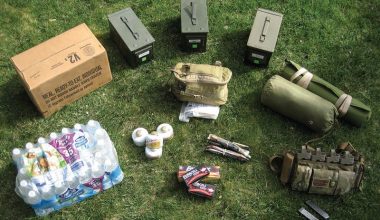IN recent years, survival-based products have gone from mere accessories to a full-blown industry. Many different variations combining survival tools together have come and gone, linking LED lights to knives, signal whistles to backpack buckles, waterproof match cases with compass and whistle, and so on. While some of the aforementioned items still exist, they are not specific to any one need, but rather are general multifunction gimmicks.
Last year, while strolling the aisles of a large outdoors convention, I saw yet another survival-based tool with many functions, but with a refreshing twist. Made by Smith’s Products, it was the Pocket Pal X2 Survival tool.
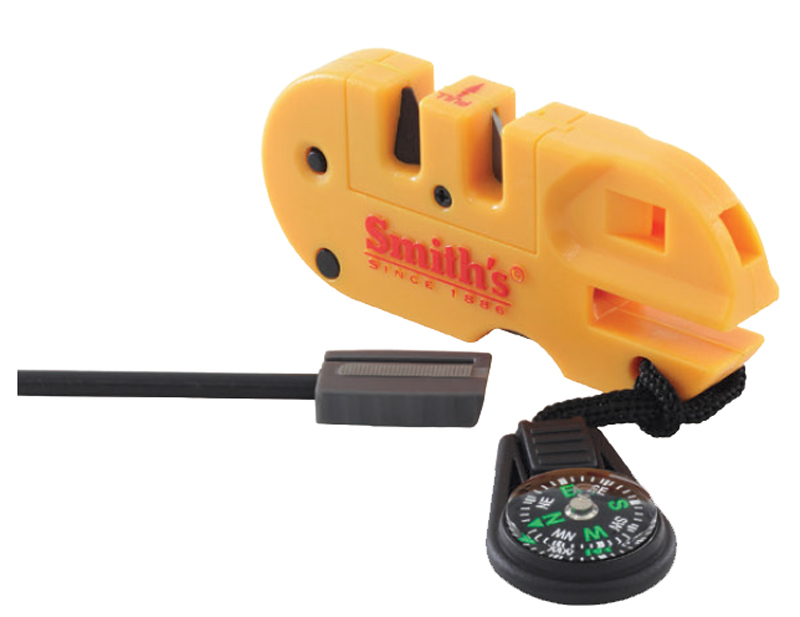
Table of Contents
POCKET PAL X2 SHARPENING & SURVIVAL TOOL
To my recollection, I have never seen a knife and tool sharpening company offer so much out-of-the-box thinking put into a single product. The Pocket Pal X2 features a fire starter (ferrocerium rod), compass, signal whistle, LED light, tapered diamond sharpening rod for serrations/ gut hooks, carbide and ceramic sharpening blades.
The items cover a few important survival needs, such as general direction, signaling, and fire. Of course, the main feature of this product is the ability to sharpen tools.
PULL-THROUGH SHARPENER
The Pocket Pal is equipped with three different sharpeners for sharpening most types of knives.This goes for just about all production knives, small or large, that have hollow or flat grinds.
The first of the three sharpeners is comprised of two sets of V notches, one of medium-grade carbide and the other of a fine ceramic. It is quite possibly the easiest type of sharpener to use. Simply place the knife blade in the V notch and pull it through from the base of the blade to the tip, taking care to keep the blade straight.
The carbide V notch removes metal and leaves a toothy, sharp edge. The ceramic V notch is the last step and gives the knife a sort of field polishing. If a knife is really dull, a few strokes on the carbide before moving on to the ceramic is the best idea. For blades that just need a quick touch-up sharpening, I would just use the ceramic V notch.
The tapered diamond rod is most commonly used for serrations, but can also be used on small hatchets, tomahawks and machetes by making small circular passes up the length of the blade—a technique better suited for removing burrs from chopping tools. This technique allows for use on tools with a convex edge for field-expedient sharpening.
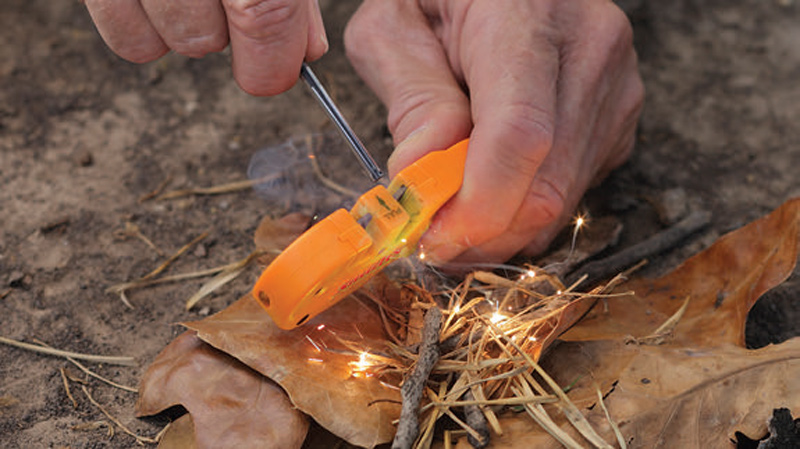
SURVIVAL FEATURES
In addition to the sharpening features, the Pocket Pal X2 has a small LED light, button compass, signal whistle, and ferrocerium rod.
I found the most innovative design feature to be the tool’s ability to provide fire. The ferrocerium rod is used in conjunction with the carbide V notch sharpener in the same way as sharpening a knife. The difference is in the velocity of pulling the rod through hard and fast enough to create a shower of sparks from the friction of the medium coarse carbide and the ferrocerium rod.
This is the first time I have ever seen in a fire-making mechanism this type of double-sided action, which gives twice the amount of sparks than using the ferrocerium rod with a conventional striker. I used this as my main fire starter for the duration of two survival classes I was teaching and allowed the students to try it on natural tinder that was a little harder to ignite with a conventional ferrocerium rod and striker.
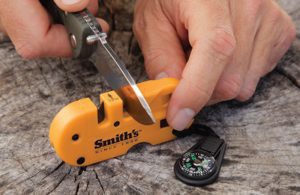
But the gray color of the ferrocerium rod proved a neardisaster when I was demoing it on rocky desert-like ground. It almost seemed to vanish, blending in too much with dirt and stones when I put it down. This could be a matter of life or death if a person were in a survival situation and lost their fire source. The tool does lock into the unit well and stays there.
The people at Smith’s got it right by attaching the compass to a small lanyard rather than embedding it into the tool. This gives a more accurate reading and keeps it away from any metal parts, which can throw the compass off. The signal whistle is built into the tool and can’t be broken even if stepped on. The LED light isn’t super bright, but I don’t feel it was meant as a primary light source. Combined with a signal mirror, it can double as another signaling device.
Not too many people opt for a multifunction tool to provide most of their survival needs. Instead, people generally carry separate items intended for each task, because a multi-function tool usually does a few jobs decently, but not any one thing really well. Smith’s Pocket Pal X2 Survival Tool has definitely made me reconsider this!
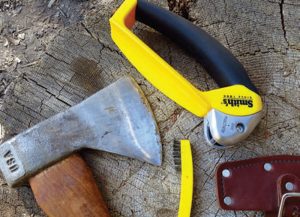
AXE & MACHETE SHARPENER
Another tool I picked up from Smith’s was meant for putting a serviceable edge on tools that usually come with a thick or poor edge, like a hardware store axe/hatchet or machete.
This tool works by holding the rubberized handle and placing it over the tool’s blade, which should be lying spine down on a flat surface or clamped into a vise. Insert the blade into the large V notch and draw it up the length of the cutting edge. The coarse carbide quickly removes a large amount of metal and, in some cases, gives a defining edge where there wasn’t one before. The metal head is weighted and helps put a little more downward force when sharpening, not to mention it adds to the durability.
Like the Pocket Pal X2, the Axe & Machete Sharpener is brightly colored. The handle is large and can be used with thick leather work gloves or winter gloves. The finger guard is wide and enhances the safety of the tool.
The real gem of this tool is the wire brush set into the handle. Anyone who has ever gunked up their sharpening stones or leather strop will appreciate this little wire brush. It does a great job of brushing off green wood or dry wood remnants from the edge before running it through the sharpening carbide.
The wire brush doesn’t scratch the surface of the axe/hatchet or machete either. What a great, simple, effective feature thought of by Smith’s!
